
Stunning Beauty Contest
October 25, 2012
The battle of the Bolshoi Ballet participants on the Russia - Culture TV channel is already underway!
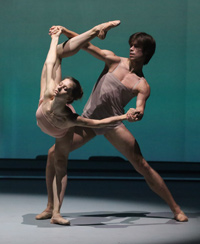 On the TV channel "Russia"–
Culture" launched a unique project "Bolshoi Ballet" - a competition of professional dancers from the country's leading theaters. This television experiment is especially close to VTB's heart. The bank is a partner of the Kultura TV channel and the country's leading ballet companies - the Bolshoi and Mariinsky theaters. Website VTBrussia.
ruintroduces readers to the competition participants.
On the TV channel "Russia"–
Culture" launched a unique project "Bolshoi Ballet" - a competition of professional dancers from the country's leading theaters. This television experiment is especially close to VTB's heart. The bank is a partner of the Kultura TV channel and the country's leading ballet companies - the Bolshoi and Mariinsky theaters. Website VTBrussia.
ruintroduces readers to the competition participants.
Tikhomirova and Ovcharenko: a direct heiress and an exemplary student
Anna Tikhomirova and Artem Ovcharenko represent the Bolshoi Theater in the Bolshoi Ballet. Anna followed in the footsteps of her parents in choosing a profession, graduated from the Moscow State Academy of Choreography in 2005 and attracted attention even while defending her diploma on the topic “The Image of Kitri in the ballet Don Quixote” - she immediately received offers from several capital theaters. Tikhomirova chose the Bolshoi. Her partner Artem Ovcharenko is one of the most promising Bolshoi dancers, the first student of Nikolai Tsiskaridze. As part of the Bolshoi Ballet project, he will change his usual role and demonstrate the versatility of his talents.
Smirnova and Lantratov: unity of opposites
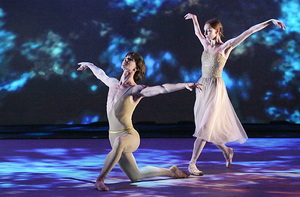 Olga Smirnova and Vladislav Lantratov are another couple from Bolshoi Theater. Smirnova is one of the best graduates of the Vaganova Academy, a dancer with ideal proportions. It is no coincidence that the directors of the Bolshoi and Mariinsky theaters fought for Olga to come to work for them in the troupe. The Bolshoi won, offering 20-year-old Olga the status of a soloist, which happens extremely rarely in the ballet world. Vladislav Lantratov has been at the Bolshoi since 2006. The sparkling, lively dancer of the Moscow school is one of the most “living” Nutcrackers of the Bolshoi, as well as Basil in Don Quixote and Solor in La Bayadère. Smirnova and Lantratov represent a unity of opposites - they are like fire and water, like day and night.
Olga Smirnova and Vladislav Lantratov are another couple from Bolshoi Theater. Smirnova is one of the best graduates of the Vaganova Academy, a dancer with ideal proportions. It is no coincidence that the directors of the Bolshoi and Mariinsky theaters fought for Olga to come to work for them in the troupe. The Bolshoi won, offering 20-year-old Olga the status of a soloist, which happens extremely rarely in the ballet world. Vladislav Lantratov has been at the Bolshoi since 2006. The sparkling, lively dancer of the Moscow school is one of the most “living” Nutcrackers of the Bolshoi, as well as Basil in Don Quixote and Solor in La Bayadère. Smirnova and Lantratov represent a unity of opposites - they are like fire and water, like day and night.
Tereshkina and Ermakov: a star to the rescue
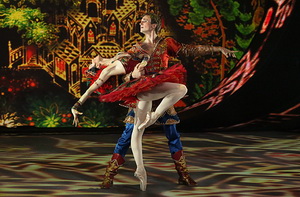 Victoria Tereshkina and Andrei Ermakov represent the Mariinsky Theater. Victoria is already a star, a prima ballerina, and therefore performs in the Bolshoi Ballet without competition. Tereshkina decided to help her colleague because his partner was unable to take part in the competition. Vaganova Academy graduate Andrei Ermakov has been with the Mariinsky troupe since 2005. Thanks to his acting talent, Ermakov succeeds in both lyricism and heroism. Among his solo roles: Solor (“La Bayadère”), Rothbart (“Swan Lake”), Jose (“Carmen Suite”).
Victoria Tereshkina and Andrei Ermakov represent the Mariinsky Theater. Victoria is already a star, a prima ballerina, and therefore performs in the Bolshoi Ballet without competition. Tereshkina decided to help her colleague because his partner was unable to take part in the competition. Vaganova Academy graduate Andrei Ermakov has been with the Mariinsky troupe since 2005. Thanks to his acting talent, Ermakov succeeds in both lyricism and heroism. Among his solo roles: Solor (“La Bayadère”), Rothbart (“Swan Lake”), Jose (“Carmen Suite”).
Lyushina and Sorokin: the challenge has been thrown!
 Larisa Lyushina and Andrey Sorokin are soloists of the Yekaterinburg State Academic Opera and Ballet Theater. Lyushina’s repertoire includes the main roles in the performances “Giselle”, “La Bayadère”, “Amore Buffo”. Andrey Sorokin, a graduate of the Kharkov choreographic school, winner of many choreographic competitions, moved to the Yekaterinburg state theater opera and ballet from Novosibirsk in 2010. You made the right decision! Andrei's repertoire includes roles in the ballets: “The Nutcracker”, “Romeo and Juliet”, “Corsair”, “Swan Lake”, “Giselle”. For dancers who have already achieved a high position in the theater, participating in a competition is a serious challenge to their professional reputation. But the risk is worth it: a successful performance can open the door to completely different ballet realities.
Larisa Lyushina and Andrey Sorokin are soloists of the Yekaterinburg State Academic Opera and Ballet Theater. Lyushina’s repertoire includes the main roles in the performances “Giselle”, “La Bayadère”, “Amore Buffo”. Andrey Sorokin, a graduate of the Kharkov choreographic school, winner of many choreographic competitions, moved to the Yekaterinburg state theater opera and ballet from Novosibirsk in 2010. You made the right decision! Andrei's repertoire includes roles in the ballets: “The Nutcracker”, “Romeo and Juliet”, “Corsair”, “Swan Lake”, “Giselle”. For dancers who have already achieved a high position in the theater, participating in a competition is a serious challenge to their professional reputation. But the risk is worth it: a successful performance can open the door to completely different ballet realities.
Andreeva and Ivenko: comrades in struggle
 For representatives of the Tatar Academic State Opera and Ballet Theater named after. M. Jalil Kristina Andreeva and Oleg Ivenko, like many other participants, are not new to competitions. They have been performing together for many years, and they have been participating in professional competitions together for many years. Having once met at the Arabesque competition, Christina and Oleg continued their ballet career together, at the same time receiving invitations from Kazan.
For representatives of the Tatar Academic State Opera and Ballet Theater named after. M. Jalil Kristina Andreeva and Oleg Ivenko, like many other participants, are not new to competitions. They have been performing together for many years, and they have been participating in professional competitions together for many years. Having once met at the Arabesque competition, Christina and Oleg continued their ballet career together, at the same time receiving invitations from Kazan.
Shapran and Polunin: wanderlust
A graduate of the Vaganova Academy of Russian Ballet, Kristina Shapran attracted attention while still a student. After the final exam, she was invited to become a soloist at the Moscow Academic Musical Theater. K. S. Stanislavsky and V. I. Nemirovich-Danchenko. 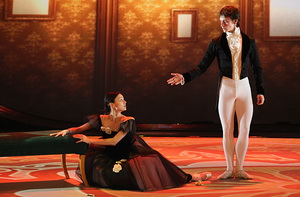 Critics immediately noted that Shapran became the adornment of the troupe thanks to the classical St. Petersburg school and subtle artistry. But if the arrival of Kristina Shapran is luck, then the appearance of Sergei Polunin in the troupe is a sensational success. Polunin began his professional training in Kyiv and continued in London. At the age of seventeen he was already called the best young dancer in England. A year after joining the Royal Ballet troupe, he became the premier of Covent Garden, but two years later, on the eve of the next premiere, the young artist left the troupe. At the end of last season, Sergei Polunin appeared on the stage of the theater. K. S. Stanislavsky and V. I. Nemirovich-Danchenko.
Critics immediately noted that Shapran became the adornment of the troupe thanks to the classical St. Petersburg school and subtle artistry. But if the arrival of Kristina Shapran is luck, then the appearance of Sergei Polunin in the troupe is a sensational success. Polunin began his professional training in Kyiv and continued in London. At the age of seventeen he was already called the best young dancer in England. A year after joining the Royal Ballet troupe, he became the premier of Covent Garden, but two years later, on the eve of the next premiere, the young artist left the troupe. At the end of last season, Sergei Polunin appeared on the stage of the theater. K. S. Stanislavsky and V. I. Nemirovich-Danchenko.
Barbasheva and Taranov: dance with a northern accent
 Ksenia Barbasheva and Alexander Taranov represent the Perm Academic Opera and Ballet Theater as part of the Bolshoi Ballet. P.I. Tchaikovsky. The Perm ballet school is known to be one of the strongest in the country, strictly preserving the classical traditions of the Mariinsky Theater. Barbasheva's extensive repertoire includes roles from Swan Lake, Sleeping Beauty, The Nutcracker and Don Quixote. Alexander Taranov, a graduate of the Perm Choreographic College, was enrolled in the ballet troupe immediately after graduating in 2008. Soon Taranov attracted attention by performing parts in Balanchine’s one-act ballets.
Ksenia Barbasheva and Alexander Taranov represent the Perm Academic Opera and Ballet Theater as part of the Bolshoi Ballet. P.I. Tchaikovsky. The Perm ballet school is known to be one of the strongest in the country, strictly preserving the classical traditions of the Mariinsky Theater. Barbasheva's extensive repertoire includes roles from Swan Lake, Sleeping Beauty, The Nutcracker and Don Quixote. Alexander Taranov, a graduate of the Perm Choreographic College, was enrolled in the ballet troupe immediately after graduating in 2008. Soon Taranov attracted attention by performing parts in Balanchine’s one-act ballets.
The Bolshoi Ballet is back!
On July 28, a press conference was held at the VGTRK press center dedicated to the start of filming of the unique project of the Rossiya K TV channel, “The Bolshoi Ballet,” which will premiere in the fall. Hosts: Ilze Liepa and Andrejs Žagars. The curator is the famous choreographer and performer Anna Abalikhina.
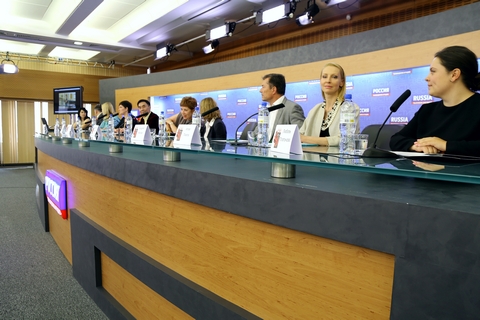
The press conference was attended by: members of the Bolshoi Ballet jury Brigitte Lefebvre (France) and Suhua Xiao (China), presenters Ilze Liepa and Andrejs Žagars, project curator Anna Abalikhina, project manager Marina Denisevich and director of the Directorate of the Chief Executive Producer of the Rossiya TV channel K" Lyubov Platonova.

The Bolshoi Ballet is the only competition in the history of Russian television in which the leading soloists of the largest musical theaters in Russia take part. This year there are 14 dancers from 6 musical theaters - the Bolshoi, Mariinsky and Mikhailovsky theaters, the Krasnoyarsk State Opera and Ballet Theater, the Perm Academic Opera and Ballet Theater. P.I. Tchaikovsky, Tatar Academic State Opera and Ballet Theater named after. M. Jalil. The artistic directors of the ballet troupes of these theaters form the repertoire of the contestants and take a direct part in their preparation for performances.
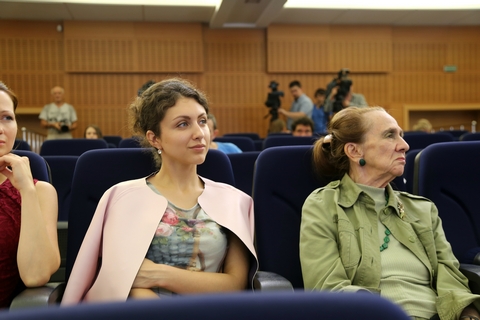
A professional jury consisting of world ballet stars will evaluate the performances of the contestants and determine the winning couple. Teacher and choreographer Brigitte Lefebvre (France); choreographer and ballet theorist Suhua Xiao (China); world ballet legend Vladimir Vasiliev; choreographer and outstanding dancer Farukh Ruzimatov; prima ballerina of the Bolshoi Theater Svetlana Zakharova; prima ballerina of the Mikhailovsky Theater and London Royal Ballet Natalya Osipova; prima ballerina of the Bolshoi Theater Evgenia Obraztsova. In each program, they will have the opportunity to give (or NOT give) their vote to each couple participating in the project. The votes cast will go into the treasury of the pair of dancers.

Suhua Xiao, who interned with Yuri Grigorovich in the 1980s, confessed his love for Russian ballet: “I understand perfectly well that if there were no Russian ballet, these great Russian teachers, I would not exist, and perhaps there would not even be the rapidly developing Chinese ballet. We really appreciate that we have a Russian ballet school. The Russian school is the greatest Russian ballerinas and dancers of the twentieth century - Pavlova, Ulanova, Makarova, Nijinsky, Nureyev, Baryshnikov. I think for the whole world, everyone is interested in coming to one of the strongest countries, where the highest is valued - the art of ballet. I don’t want to offend anyone, but I think that the Russian school is one of the most best schools in the world".

Brigitte Lefebvre noted that she was flattered by the invitation to judge the competition, because nothing like this exists in France: “ There are other forms, but I never agreed to participate in them. Many things are important for a dancer: talent, demand, time for endless rehearsals and, of course, fate. We have the opportunity to open the door to tomorrow a little, to see young dancers and choreographers, some may be better, some a little worse, but they all take part in the project, they exist, they are alive. And they really love dance, which brought them together.”.
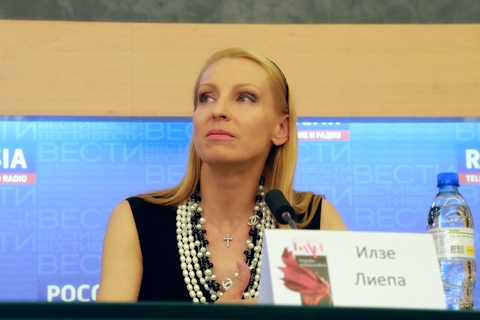
The project leaders have special powers this season. Ilze Liepa and Andrejs Žagars can give the jury members the opportunity to correct their own mistakes or simply support them in their desire to highlight a particular couple by adding one vote. " It is a great honor for me to become the host of this grandiose project., - shared Ilze Liepa. - After all, it is filled with the world in which I and my whole family live. The world of ballet. Now we all live in the age of new technologies, so maybe this is a new era when we don’t go to a competition, but the competition comes to our home. The participants are young, but they are already artists, some of them were applauded in different countries ah peace. But even despite this, getting into this project is a huge success for them. And I assure you that there is intrigue in every step of this project».
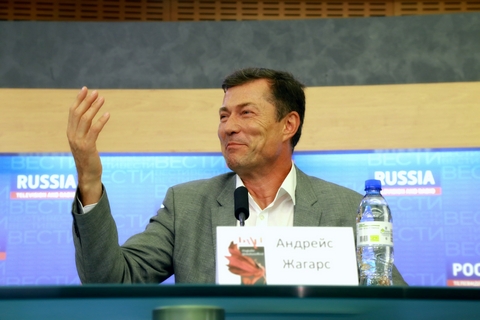
A significant part of the Bolshoi Ballet is devoted to modern choreography: from the masters of the 20th century to the masters included in the top list of choreographers of the 21st century. " The project has attracted the fantastic forces of modern, interesting fashion choreographers, including masters, in whose productions every ballerina and every dancer dreams of dancing., continued Ilze Liepa. - For a young artist to enter this project, to personally touch and get to know a new choreographer, to gather around him an entire concert program with unexpected choreography is a great miracle. I am very happy for the guys, that they will enrich their creative biography in this way, and will certainly reveal themselves in a new way in this project. And we will witness this whole miracle!»

The finale of the project, the idea of which the creators of the program are still keeping secret, will be unexpectedly bright. It is only known that the best favorite couple will be awarded a prize specially provided by the project partner, the Russian Gallery jewelry art"Mikhailov Gallery".
Filming of “The Bolshoi Ballet” will take place on July 30-31, August 1, 4 and 5 from 18.00 in Pavilion 1 of Mosfilm (Mosfilmovskaya St., 1).
Detailed information about the Bolshoi Ballet project on the website http://tvkultura.ru/
Photos by Irina Shymchak
"Bolshoi Ballet" on Culture. Release first.
Oct 22, 2012
“Russia-Culture” has finally started showing “The Bolshoi Ballet”.
I am not a fan of competition and concert programs, so I cannot promise that I will watch and describe all the episodes. But, most likely, I won’t limit myself to just the first issue, so I’m adding the appropriate tag to LiveJournal.
First of all, I’ll say about the organizational side, so that, if possible, I don’t return to it further.
Here I have 4 questions for the film crew: “why?” and 2 questions “why?”:
1. Why is there so much accompanying material (stories about the participants, conversations with the jury, conversations between the jury and the participants, etc.)?
It is clear that the format, designed for a mass audience, presupposes that it is necessary to explain to this viewer - who, what, where, especially since some participants (Ekaterinburg residents, Kazan residents, Perm residents) are not very well known in the ballet world, but it is necessary How should I dose this material? At least so that it doesn’t take up several times more time than performances.
By the way, I’m still wondering: what will this “non-competitive” time be used for in the next issues? It seems that everything has already been said about the contestants today. Or did they decide to release all the bonuses at once for the first time, and then only what was filmed in the studio will be shown?
2. Why so much pathos?
Not so much in content (although there were also excesses, such as comparing O. Smirnova with M. Semenova and repeatedly repeated tirades on how wonderful it was that artists from non-metropolitan theaters, thanks to the project, had the opportunity to work with modern choreographers), but in form . Why this pathetic declamation by the presenters, this escalation of the atmosphere of greatness and significance of what is happening? People familiar with ballet world, are able to evaluate what is shown themselves. All this will only scare off strangers.
3. Why so much dubious humor?
Well, okay, the “comic” dialogues of the presenters and shots where I. Perez chases away the cameraman, and A. Ermakov is fooling around on the roof of the Mariinsky Theater, this is simply not funny. But when A. Sigalova asks V. Lantratov whether he got into the Moscow State Academy of Arts and BT through connections, this is clearly too much.
4. Why was it necessary to talk so much about O. Skorik’s refusal?
Well, the girl refused, well, she let the organizers down. Everyone understands that what they did was wrong, that this is impossible. But on air this topic was emphasized too much and presented too intrusively, with the poorly hidden message “Remember how bad Oksana Skorik is!” At worst, they could have interviewed her, where she herself would have commented on her refusal, otherwise there would have been some impression of being nailed in absentia to the board of shame.
5. Why can’t directors and cameramen who film a ballet understand that the dance needs to be shown in a long shot?
Why, for example, close-ups in solo performances, which do not involve mimic play at all (like the La Sylphide variation)? Or, conversely, long-range plans where absolutely nothing can be seen?
6. Why couldn’t the dialogues of the participants and the jury be recorded not immediately after the performance, but after some time, so that the dancers would not be out of breath during their lines?
I could add a few more points, but perhaps I won’t bore the readers and will move on to the competition program.
Of all the numbers shown today, I highlighted three for myself: a duet from RJ ( A. Tikhomirov - A. Ovcharenko), “Narcissus” (S. Polunin) and two adagios from “La Bayadère” (O. Smirnova - V. Lantratov).
Adagio from RiJ (chorus L. Lavrovsky, Spanish A. Tikhomirova and A. Ovchrarenko).
The main thing that I would like to note is that the dancers found a new, modern manner of performing Lavrovsky’s choreography. For Ovcharenko and Tikhomirova, this was not a drama ballet, with its precise psychological nuances, with an understanding of the specific content of each combination and each movement, with somewhat illustrative and melodramatic play. They enlarged and fixed each pose as much as possible, bringing the fragments based on plastic closer in style to the dance fragments. As a result, both the dance itself and the images of the characters turned out to be more generalized, so to speak, more “ballet-like” (in in a good way this word).
There were minor flaws. Artem missed landing on some jumps; when Anna was shown close-up in front of the upper support - you could see how nervous she was when she walked onto it. But this is all unimportant; the whole thing was completely successful.
Narcissus (chorus: K. Goleizovsky, Spanish: S. Polunin).
I won’t write anything about technology – words are absolutely powerless here. Polunin's interpretation of the number is close to Vasiliev's - a courageous, healthy, natural hero. A child of nature, in the finale of the number with nature and merging. But, if V. Vasilva’s dance had archaic features and there was a lot of grotesque, then Polunin makes us remember the art of the classical period and even somewhat Hellenistic “decadence”. At moments it seems that the simplicity and openness of his Narcissus are deceptive, that behind it lies his true essence, full of kinks and contradictions.
Two adagios from the “Shadows” act from the ballet “La Bayadère” (chorus: M. Petipa, Spanish: O. Smirnova and V. Lantratov).
Just a brilliant performance. Olga has something important to say classical ballets the ability to combine an accurate portrayal of an image with a ballerina’s stature and ballerina’s dignity. Parterre combinations in wide poses “sang” in true St. Petersburg style, showing long, soft lines of the whole body. In general, in terms of technique, apart from slightly harsh landings from jumps, I saw only two blemishes in the second adagio: in the dive tours the attitude was a little angular, I would have liked a more rounded line, and in the supported sissons the legs opened a little sharply.
Vlad showed himself to be a wonderful partner, in solo jumping combinations he clearly recorded the position in the air in each jump (if you look at it from a technical point of view, he succeeds in this due to the fact that in his jump the balloon dominates the elevation). I can’t say anything about the acting side - in those two fragments that he and Olga danced, you can’t show practically anything separately from the whole ballet.
I can’t judge the rest of the participants yet.
K. Shapran, as V. Derevianko and D. Vishneva correctly noted, they chose a solo from Lacotte’s La Sylphide that was too short and not very beneficial for showing off their capabilities (besides, “thanks to” the editing, half of the dance was impossible to see).
A. Ermakov - V. Tereshkina(again I agree with Derevianko and Vishneva) they came out with a completely unproven number.
K. Andreeva - O. Ivenko and L. Lyushina - A. Sorokin We danced modern choreography specifically for the project, and in it it is difficult, without knowing the text, to determine how correctly the dancers are performing it.
But, perhaps, I’ll say a few words about the “texts” themselves.
By the way, a few words about “texts”, i.e. about modern numbers. I. Perez’s production pleased me with its musicality, but the idea of the duet (both dramaturgically and in its implementation on stage) has already been used many times (D. Bryantsev’s “The Road” immediately appeared before my eyes), and the vocabulary is not very original. F. Magadan seemed more interesting, but I wouldn’t call his duet modern dance. Visually, at least, it was more reminiscent of neoclassical ballets in the style of Balanchine's black and white ballets. However, I am not a great expert on modern dance; knowledgeable people can correct me.
K. Barbasheva – A. Taranov(here I’ll argue with D. Vishneva) in general they danced quite lively and temperamentally, but the choreography (the duet of Faun and Bacchae from “Walpurgis Night”, I don’t remember exactly the name of the choreographer, in my opinion, Kovalev) let them down: adagio, re-singing the motives of Soviet bravura duets like “Moshkovsky’s Waltz” by V. Vainonen and “Spring Waters” by A. Messerer and solo pieces, vividly reminiscent of the variations and coda from “Diana and Actaeon,” gave rise to performance cliches of the same origin.
P.S. I apologize for the confusion of the text, now I don’t have time to read and edit the post for a long time.
Author A. S. Galkin.
Modified November 25, 2012 by reinchilSince January 16, 2016, almost two months, on the air of the Rossiya K TV channel, seven duets of dancers from six leading musical theaters in Russia competed for the title of winners of the second season of the project "Bolshoi Ballet". The most difficult tests are behind us, performances in new television conditions for the participants, in new parts, in new roles, grueling rehearsals, work at the limit of physical and emotional capabilities.
From July 10, on Sundays, the Rossiya K TV channel, at the request of viewers, repeats the Bolshoi Ballet project.
The ballet competition for young performers also solves an educational task, and at the same time it is a spectacle full of dramatic collisions, unexpected plot twists, dictated not only by the scriptwriters, but by life itself.
The idea of creating the television competition "Bolshoi Ballet" belongs to the editor-in-chief of the TV channel "Russia - Culture", director of the VGTRK branch - the State Television and Radio Broadcasting Company "Culture" Sergei Leonidovich Shumakov.
Participants in the new season of the Bolshoi Ballet project included seven duets from six leading theaters in the country: (Bolshoi Theatre), (Tatar Opera and Ballet Theater), (Krasnoyarsk Opera and Ballet Theater), (Mariinsky Theatre), (Mariinsky Theatre), (Mikhailovsky theater), (Perm Opera and Ballet Theater).
Project leaders - soloist of the Bolshoi Theater ballet, People's Artist of Russia and actor, theater director, ex-director of the Latvian National Opera.
“I’m glad that such a competition exists on television,” says Ilze Liepa. “This contributes to the development of my favorite art form, to which I dedicated my life, and also attracts the attention of a wide audience to ballet, which is our national treasure. This competition is unique precisely because "that real professionals, leading soloists of famous ballet companies perform here."
The jury included world ballet stars: - ballet dancer, choreographer and teacher, who headed the Paris Opera Ballet for 20 years; Evgenia Obraztsova- prima ballerina of the Bolshoi Theater of Russia, muse of the French choreographer Pierre Lacotte.
The best duet of the project receives the Grand Prix of the competition - created especially for the competition by the gallery of Russian jewelry art "Mikhailov Gallery".
Each of the seven programs presents unusual choreographic numbers called “Dance in Space” staged by the project curator and contemporary choreographer. Combining the possibilities of modern television and dance, Anna Abalikhina creates multimedia performances in which specially invited dancers take part.
Project The Bolshoi Ballet 2016 was awarded the National Television Award TEFI in the Educational Program category.
The Bolshoi Ballet became one of the main television events of 2012, and its authors were awarded Russian government awards in the field of culture. However, the project did not continue, giving way to no less brilliant domestically produced shows “Big Opera” and “Big Jazz” on the “Russia K” channel. But a few years later they decided to resume the Bolshoi Ballet.
To a question from an RG observer at a press conference dedicated to the start of filming the new season of the Bolshoi Ballet program, representative of the Russia K channel Lyubov Platonova answered:
Projects have their seasonality. We were never in a hurry, realizing that our projects could not be a conveyor belt - neither opera, nor jazz, nor ballet. And it’s fortunate that the “Culture” channel has the opportunity to reveal real names.
The project in the new television season will be led by the Bolshoi Theater ballet soloist, People's Artist of the Russian Federation Ilze Liepa and actor, theater director, Andrejs Žagars, who headed the Latvian National Opera for 17 years. The curator of the program is the famous choreographer and performer Anna Abalikhina. She said that this time the project will focus on combining dance and new technologies: leading media artists have been invited to collaborate. Within the framework of the Bolshoi Ballet there will even be a special project dedicated to the synthesis of modern dance and new technologies.
This time the program includes 14 dancers from six musical theaters: Daria Khokhlova and Igor Tsvirko (Bolshoi Theatre), Nadezhda Batoeva and Ernest Latypov, Renata Shakirova and Kimin Kim (Mariinsky Theatre), Anastasia Soboleva and Viktor Lebedev (Mikhailovsky Theatre), Ekaterina Bulgutova and Yuri Kudryavtsev (Krasnoyarsk State Opera and Ballet Theater), Inna Bilash and Nikita Chetverikov (Perm Academic Opera and Ballet Theater named after P. I. Tchaikovsky), Midori Terada and Koya Okawa (Tatar Academic State Opera and Ballet Theater named after M. . Jalil).
At the press conference, the question was asked why there were no participants from the Stanislavsky and Nemirovich-Danchenko Theater. Lyubov Platonova replied that one couple was supposed to film, but injuries prevented her from remaining among the participants. In particular, ballet soloist Ksenia Ryzhkova was supposed to dance in the television program.
The good news is that among those who will shape the repertoire of the contestants and take a direct part in their preparation for performances is Sergei Filin (artistic director of the Bolshoi Theater Ballet). As well as artistic directors of the theater ballet troupes: Yuri Fateev (Mariinsky Theatre), Mikhail Messerer (Mikhailovsky Theatre), Vladimir Yakovlev (Tatar Academic State Opera and Ballet Theater named after M. Jalil), Alexey Miroshnichenko (Perm Academic Opera and Ballet Theater named after. P.I. Tchaikovsky), Sergei Bobrov (Krasnoyarsk State Opera and Ballet Theater).
The winning couple of the Bolshoi Ballet will be determined by a professional jury: French ballet dancer, choreographer and teacher, who for almost 20 years was the director of the ballet of the Paris National Opera, Brigitte Lefebvre; choreographer, ballet theorist, professor of the Beijing Dance Academy, deputy chairman of the Chinese Ballet Society Suhua Xiao; National artist USSR and RF Vladimir Vasiliev; choreographer, former premier of the Mariinsky Theater and artistic director of the Mikhailovsky Theater ballet, People's Artist of the Russian Federation Farukh Ruzimatov; prima ballerina of the Bolshoi Theater, etoile of the La Scala theater, People's Artist of the Russian Federation Svetlana Zakharova; prima ballerina of the Mikhailovsky Theater and the London Royal Ballet Natalya Osipova and prima ballerina of the Bolshoi Theater Evgenia Obraztsova.
But the creators of the program do not hide that the competition part is not the main thing for them. The purpose of the television show is to showcase and expose the contestants, to give them the opportunity to meet authority figures in the field of ballet and hear their opinions on the performances.
This season, the winner of the Bolshoi Ballet will be one and only couple. Jewelers will make a special prize for her.
In each program, the jury will have the opportunity to give their vote to each couple participating in the project. The presenters have special powers this season: Ilze Liepa and Andrejs Žagars can give the jury members the opportunity to correct their own mistakes or simply support them in their desire to highlight a particular couple by adding one vote. Only one couple will be able to receive it and only if the jury members manage to agree among themselves.
At the press conference they said that the origins of the creation of the program were such choreographers as, for example, Yuri Grigorovich. And Maya Plisetskaya watched the previous season, but the legendary ballerina was afraid to sit on the jury, because it seemed to her that her weighty word could hurt the participants.
Ilze Liepa said that at one time she would have gladly taken part in such a show as a contestant. Regarding the work of the participants, Ilze recalled the words of Faina Ranevskaya that ballet is hard labor in flowers, which caused Brigitte Lefebvre to smile approvingly.
By the way
Filming of the project will continue at Mosfilm until August 6. They will take place without spectators. But they gathered a very impressive professional audience from different countries and continents. And in the fall the new season of the Bolshoi Ballet can be seen on television.









